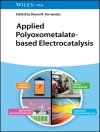Photoinitiating systems for polymerization reactions are largely encountered in a variety of traditional and high-tech sectors, such as radiation curing, (laser) imaging, (micro)electronics, optics, and medicine.
This book extensively covers radical and nonradical photoinitiating systems and is divided into four parts:
* Basic principles in photopolymerization reactions
* Radical photoinitiating systems
* Nonradical photoinitiating systems
* Reactivity of the photoinitiating system
The four parts present the basic concepts of photopolymerization reactions, review all of the available photoinitiating systems and deliver a
thorough description of the encountered mechanisms. A large amount of experimental and theoretical data has been collected herein. This
book allows the reader to gain a clear understanding by providing a general discussion of the photochemistry and chemistry involved.
The most recent and exciting developments, as well as the promising prospects for new applications, are outlined.
Daftar Isi
INTRODUCTION
PART I: Basic Principles and Applications of Photopolymerization Reactions
PHOTOPOLYMERIZATION AND PHOTO-CROSS-LINKING LIGHT SOURCES
Electromagnetic Radiation
Characteristics of a Light Source
Conventional and Unconventional Light Sources
EXPERIMENTAL DEVICES AND EXAMPLES OF APPLICATIONS
UV Curing Area: Coatings, Inks, Varnishes, Paints, and Adhesives
Conventional Printing Plates
Manufacture of Objects and Composites
Stereolithography
Applications in Microelectronics
Laser Direct Imaging
Computer-to-Plate Technology
Holography
Optics
Medical Applications
Fabrication of Nano-Objects through a Two-Photon Absorption Polymerization
Photopolymerization Using Near-Field Optical Techniques
Search for New Properties and New End Uses
Photopolymerization and Nanotechnology
Search for a Green Chemistry
PHOTOPOLYMERIZATION REACTIONS
Encountered Reactions, Media, and Experimental Conditions
Typical Characteristics of Selected Photopolymerization Reactions
Two-Photon Absorption-Induced Polymerization
Remote Curing: Photopolymerization without Light
Photoactivated Hydrosilylation Reactions
PHOTOSENSITIVE SYSTEMS
General Properties
Absorption of Light by a Molecule
Jablonski’s Diagram
Kinetics of the Excited State Processes
Photoinitiator and Photosensitizer
Absorption of a Photosensitive System
Initiation Step of a Photoinduced Polymerization
Reactivity of a Photosensitive System
APPROACH OF THE PHOTOCHEMICAL AND CHEMICAL REACTIVITY
Analysis of the Excited-State Processes
Quantum Mechanical Calculations
Cleavage Process
Hydrogen Transfer Processes
Energy Transfer
Reactivity of Radicals
EFFICIENCY OF A PHOTOPOLYMERIZATION REACTION
Kinetic Laws
Monitoring the Photopolymerization Reaction
Efficiency versus Reactivity
Absorption of Light by a Pigment
Oxygen Inhibition
Absorption of Light Stabilizers
Role of the Environment
PART II: Radical Photoinitiating Systems
ONE-COMPONENT PHOTOINITIATING SYSTEMS
Benzoyl-Chromophore-Based Photoinitiators
Substituted Benzoyl-Chromophore-Based Photoinitiators
Hydroxy Alkyl Heterocyclic Ketones
Hydroxy Alkyl Conjugated Ketones
Benzophenone- and Thioxanthone-Moiety-Based Cleavable Systems
Benzoyl Phosphine Oxide Derivatives
Phosphine Oxide Derivatives
Trichloromethyl Triazines
Biradical-Generating Ketones
Peroxides
Diketones
Azides and Aromatic Bis-Azides
Azo Derivatives
Disulfide Derivatives
Disilane Derivatives
Diselenide and Diphenylditelluride Derivatives
Digermane and Distannane Derivatives
Carbon – Germanium Cleavable-Bond-Based Derivatives
Carbon – Silicon and Germanium ‘Silicon Cleavable’ Bond-Based Derivatives
Silicon Chemistry and Conventional Cleavable Photoinitiators
Sulfur – Carbon Cleavable-Bond-Based Derivatives
Sulfur – Silicon Cleavable-Bond-Based Derivatives
Peresters
Barton’s Ester Derivatives
Hydroxamic and Thiohydroxamic Acids and Esters
Organoborates
Organometallic Compounds
Metal Salts and Metallic Salt Complexes
Metal-Releasing Compound
Cleavable Photoinitiators in Living Polymerization
Oxyamines
Cleavable Photoinitiators for Two-Photon Absorption
Nanoparticle-Formation-Mediated Cleavable Photoinitiators
Miscellaneous Systems
Tentatively Explored UV-Light-Cleavable Bonds
TWO-COMPONENT PHOTOINITIATING SYSTEMS
Ketone-/Hydrogen-Donor-Based Systems
Dye-Based Systems
Other Type II Photoinitiating Systems
MULTICOMPONENT PHOTOINITIATING SYSTEMS
Generally Encountered Mechanism
Other Mechanisms
Type II Photoinitiator/Silane: Search for New Properties
Miscellaneous Multicomponent Systems
OTHER PHOTOINITIATING SYSTEMS
Photoinitiator-Free Systems or Self-Initiating Monomers
Semiconductor Nanoparticles
Self-Assembled Photoinitiator Monolayers
PART III: Nonradical Photoinitiating Systems
CATIONIC PHOTOINITIATING SYSTEMS
Diazonium Salts
Onium Salts
Organometallic Derivatives
Onium Salt/Photosensitizer Systems
Free-Radical-Promoted Cationic Photopolymerization
Miscellaneous Sy
Tentang Penulis
Jean-Pierre Fouassier was a Professor of Physical Chemistry at the University of Haute Alsace, Mulhouse until October 2011. He was Head of a University/CNRS Laboratory, a Member of the Organizing Committees of many International Conferences, a Director of the Ecole Nationale
Supérieure de Chimie de Mulhouse and a Member of the French National University Council. His research interests focused both on the excited-state processes in photoinitiatiors and photosensitizers and their application to photopolymerization reactions in various areas. He has
published a total of around 600 research articles, book chapters, review papers, technical papers, proceedings, and patents, as well as authoring one book, one technical report and editing 6 books (14 volumes).
Jacques Lalevée is a Professor of Physical Chemistry at the University of Haute Alsace, Mulhouse. His research interests are focused on free-radical chemistry and the design of efficient systems for photopolymerization processes. He has published a total of around 160 research
articles, technical papers, proceedings, patents, review papers, and book chapters. He is also a Member of the Institut Universitaire de France (Paris).











